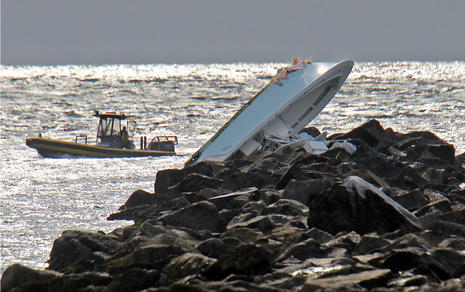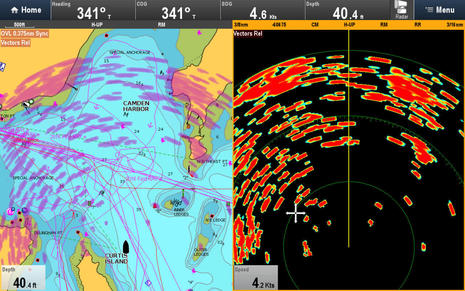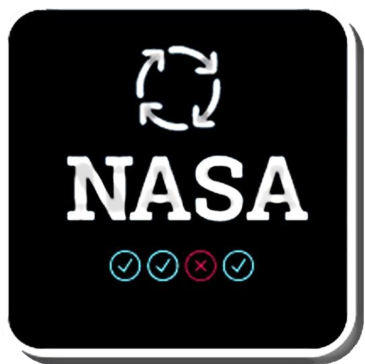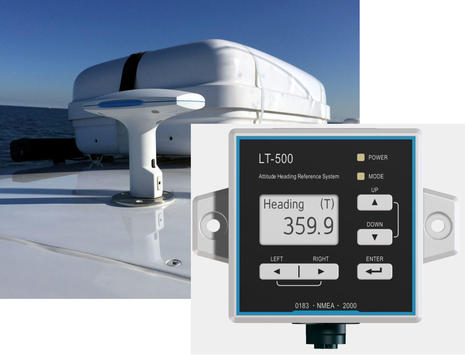Monthly Archive: September 2016
 You probably already know the rudiments of the story. At about 3 am on Sunday, three young men died when their 32-foot center console fishing boat engaged at high speed with the long north jetty that guards the Port of Miami’s Government Cut channel. Just the violence of the crash — it was heard by a policeman on shore nearly a half mile away — was noteworthy, but the owner and probable driver was the beloved budding baseball star Jose Fernandez. It’s a deeply tragic story as is, but is there anything in it to learn about boating safety?
You probably already know the rudiments of the story. At about 3 am on Sunday, three young men died when their 32-foot center console fishing boat engaged at high speed with the long north jetty that guards the Port of Miami’s Government Cut channel. Just the violence of the crash — it was heard by a policeman on shore nearly a half mile away — was noteworthy, but the owner and probable driver was the beloved budding baseball star Jose Fernandez. It’s a deeply tragic story as is, but is there anything in it to learn about boating safety?
 That’s very good radar imagery in my experience, especially given that it’s the fully automated output of a relatively small and affordable radome which can be super easy to install. Note, for instance, how well it’s separating the moored boats in Camden’s recently discussed Outer Harbor and thus usefully revealing the channel into the Inner Harbor (that many visiting boats have trouble finding even in clear daylight). I also got to see how well Raymarine navigation networks can handle dual radar scanners and how sophisticated their WiFi has become. And finally I hope to spank Ray about its annoyingly overprotective MARPA alarms (though that situation could be easily fixed in software ;-)…
That’s very good radar imagery in my experience, especially given that it’s the fully automated output of a relatively small and affordable radome which can be super easy to install. Note, for instance, how well it’s separating the moored boats in Camden’s recently discussed Outer Harbor and thus usefully revealing the channel into the Inner Harbor (that many visiting boats have trouble finding even in clear daylight). I also got to see how well Raymarine navigation networks can handle dual radar scanners and how sophisticated their WiFi has become. And finally I hope to spank Ray about its annoyingly overprotective MARPA alarms (though that situation could be easily fixed in software ;-)…
 Marine electronics tech support is a ritual I’m all too familiar with. Dial the phone, wade through the metaphorical press one for yes, two for no and wait until the tech picks up. For the average boater this can quickly turn into a button pushing slog with unsatisfactory results. Tech: “What version of software are you running?” Boater: I don’t know, where do I find it?” Tech: “Go to the System tab.” Boater: “Where’s the system tab?” Tech: “It’s in Settings.” Boater: “Where’s Settings?” I won’t belabor this but sometimes it takes a lot of patience to provide tech support with the information they need to help you. This is now changing for the better with Navico’s new cloud-based Network Analyzer Service Assistant (NASA) software. It’s the most significant use of the Internet by a MFD to date, I think, and the high-tech aspect of the NASA acronym isn’t lost on me either.
Marine electronics tech support is a ritual I’m all too familiar with. Dial the phone, wade through the metaphorical press one for yes, two for no and wait until the tech picks up. For the average boater this can quickly turn into a button pushing slog with unsatisfactory results. Tech: “What version of software are you running?” Boater: I don’t know, where do I find it?” Tech: “Go to the System tab.” Boater: “Where’s the system tab?” Tech: “It’s in Settings.” Boater: “Where’s Settings?” I won’t belabor this but sometimes it takes a lot of patience to provide tech support with the information they need to help you. This is now changing for the better with Navico’s new cloud-based Network Analyzer Service Assistant (NASA) software. It’s the most significant use of the Internet by a MFD to date, I think, and the high-tech aspect of the NASA acronym isn’t lost on me either.
 Today I’ve got a smorgasbord of new gear to share, starting with a trio of serious multi-sensors from Lars Thrane A/S in Denmark. The company first came to my attention when they inquired about advertising — thanks, LT — but a little research revealed why their products may well appeal to Panbo readers. The LT-500 AHRS in the foreground is an 11-sensor Heading, Roll, Pitch, Air Pressure and Temperature device; the LT-300 GNSS not shown is a 72-channel GPS/GLONASS/BeiDou receiver; and the LT-1000 Navigation Reference Unit (NRU) shown installed essentially combines the two. Common to all of the current Lars Thrane products is promised high precision, reasonable pricing, simultaneous NMEA 0183 and 2000 output, and an impressive attention to the real boat details involved in installation, calibration, and future proofing…
Today I’ve got a smorgasbord of new gear to share, starting with a trio of serious multi-sensors from Lars Thrane A/S in Denmark. The company first came to my attention when they inquired about advertising — thanks, LT — but a little research revealed why their products may well appeal to Panbo readers. The LT-500 AHRS in the foreground is an 11-sensor Heading, Roll, Pitch, Air Pressure and Temperature device; the LT-300 GNSS not shown is a 72-channel GPS/GLONASS/BeiDou receiver; and the LT-1000 Navigation Reference Unit (NRU) shown installed essentially combines the two. Common to all of the current Lars Thrane products is promised high precision, reasonable pricing, simultaneous NMEA 0183 and 2000 output, and an impressive attention to the real boat details involved in installation, calibration, and future proofing…
 You probably already know the rudiments of the story. At about 3 am on Sunday, three young men died when their 32-foot center console fishing boat engaged at high speed with the long north jetty that guards the Port of Miami’s Government Cut channel. Just the violence of the crash — it was heard by a policeman on shore nearly a half mile away — was noteworthy, but the owner and probable driver was the beloved budding baseball star Jose Fernandez. It’s a deeply tragic story as is, but is there anything in it to learn about boating safety?
You probably already know the rudiments of the story. At about 3 am on Sunday, three young men died when their 32-foot center console fishing boat engaged at high speed with the long north jetty that guards the Port of Miami’s Government Cut channel. Just the violence of the crash — it was heard by a policeman on shore nearly a half mile away — was noteworthy, but the owner and probable driver was the beloved budding baseball star Jose Fernandez. It’s a deeply tragic story as is, but is there anything in it to learn about boating safety?



 Marine electronics tech support is a ritual I’m all too familiar with. Dial the phone, wade through the metaphorical press one for yes, two for no and wait until the tech picks up. For the average boater this can quickly turn into a button pushing slog with unsatisfactory results. Tech: “What version of software are you running?” Boater: I don’t know, where do I find it?” Tech: “Go to the System tab.” Boater: “Where’s the system tab?” Tech: “It’s in Settings.” Boater: “Where’s Settings?” I won’t belabor this but sometimes it takes a lot of patience to provide tech support with the information they need to help you. This is now changing for the better with Navico’s new cloud-based
Marine electronics tech support is a ritual I’m all too familiar with. Dial the phone, wade through the metaphorical press one for yes, two for no and wait until the tech picks up. For the average boater this can quickly turn into a button pushing slog with unsatisfactory results. Tech: “What version of software are you running?” Boater: I don’t know, where do I find it?” Tech: “Go to the System tab.” Boater: “Where’s the system tab?” Tech: “It’s in Settings.” Boater: “Where’s Settings?” I won’t belabor this but sometimes it takes a lot of patience to provide tech support with the information they need to help you. This is now changing for the better with Navico’s new cloud-based 






